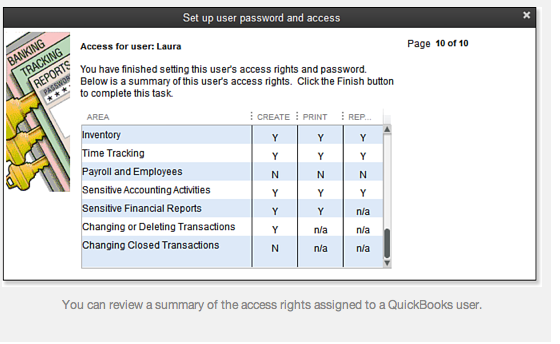
- ADD USER AND ALLOW PREMMISIONS ON MAC FOR MULTIPLE FILES UPDATE
- ADD USER AND ALLOW PREMMISIONS ON MAC FOR MULTIPLE FILES WINDOWS 10
- ADD USER AND ALLOW PREMMISIONS ON MAC FOR MULTIPLE FILES PASSWORD
- ADD USER AND ALLOW PREMMISIONS ON MAC FOR MULTIPLE FILES WINDOWS
macOS recursively applies this new permission, which means it sets every file and folder nested within the select folder to the new permission.įor files and folders that are scattered: You can change their permissions as a group, but only by selecting either files or folders in a pass. From the gear menu below that list, select Apply to Enclosed Items and confirm. Change permissions as you wish, such as turning the owner’s Privilege-here labeled “glenn (Me)”-to Read & Write from the popup menu to the right of the name. In the Sharing & Permissions section, click the lock icon at the lower-right corner and enter the appropriate account password. Choose File > Get Info or press Command-I. In the Finder, select the top folder in the set of files and folders you want to modify. The solution is very straightforward, fortunately.įor files organized into a folder or set of nested folders: One reader noted after a number of transitions, they had a mass of files marked as “Read only.” Even though their user account “owned” these files, it’s still a one-at-a-time override situation for them to interact with those files, and a constant hassle. But sometimes things go out of joint, and the Finder can help set them right. The Finder mediates access to permission (it calls them Privileges in some places), and manages a number of Apple-specific attributes we rarely have to know about. 
Get Info lets you change permissions recursively for folders (every nested item) or for groups of items. It showsĪs "Guest" is the account used to authenticate.MacOS is Unix at its heart, and Unix thrives on “ownership” and “permissions.” These are attributes attached to every file and folder that describe which users and groups have the right to perform what actions on them: read or view, modify, delete, or, in the case of folders, also see the contents, remove items, and add items. Check in “Computer Management” for the Session status.Test access to the newly created “Shared” folder.IP Address" to include the additional subnets that need access to Under the Scope tab, modifyĮach Inbound firewall rule and change "localsubnet" under "Remote Settings, click on “Inbound Rules” and filter by the File and
ADD USER AND ALLOW PREMMISIONS ON MAC FOR MULTIPLE FILES WINDOWS
Share, go into the Windows Defender Firewall, Advanced Firewall
 Optional: If multiple subnets/VLANs need to access the file. Optional: Turn off sharing on the “Users” directory that wasĮnabled when the Public Folder sharing was enabled. Permissions to match the permissions in Advanced Security Settings, For “Interactive”, “Service” and “Batch” set the 2 special. Set the Security permissions the same as the “Public”. Set the Share permission to “Everyone”, “Full Control”. Enable the share by clicking the “Advanced Sharing…” button. Create the “Shared” folder on the drive of your choice on.
Optional: If multiple subnets/VLANs need to access the file. Optional: Turn off sharing on the “Users” directory that wasĮnabled when the Public Folder sharing was enabled. Permissions to match the permissions in Advanced Security Settings, For “Interactive”, “Service” and “Batch” set the 2 special. Set the Security permissions the same as the “Public”. Set the Share permission to “Everyone”, “Full Control”. Enable the share by clicking the “Advanced Sharing…” button. Create the “Shared” folder on the drive of your choice on. ADD USER AND ALLOW PREMMISIONS ON MAC FOR MULTIPLE FILES PASSWORD
Click “Turn off password protected sharing”. Check “Turn on sharing so anyone with network access can read and. Open “Network and Sharing Center” and click on the “Advanced. This method does not modify any local security policies or registry settings (that I have seen posted all over the Internet) This method involves enabling the Public folder sharing functionality built into Windows, creating a new Shared folder and setting the Sharing and NTFS permissions identical to the Public folder under the Users directory. 
ADD USER AND ALLOW PREMMISIONS ON MAC FOR MULTIPLE FILES WINDOWS 10
Here is an alternative method that I use to accomplish this in Windows 10 Pro. If anyone could provide more details regarding in which situation the setting is located at a different place, I am willing to add this information. I have checked this on Windows Server 2019 and could not find this tree item.
Computer Configuration -> Policies -> Windows Settings -> Security Settings -> Local Policies -> Security Options. ADD USER AND ALLOW PREMMISIONS ON MAC FOR MULTIPLE FILES UPDATE
Update (May pointed out that the path in the group policy editor's tree could also be: I would like to draw your attention to the comment by as he pointed out, that on more recent systems fewer steps are necessary.
Network access: Shares that can be accessed anonymously: YOUR_SHARE_NAME. Network access: Restrict anonymous access to Named Pipes and Shares: Disabled. Network access: Let Everyone permissions apply to anonymous users: Enabled. Accounts: Guest account status: Enabled. Computer Configuration -> Windows Settings -> Security Settings -> Local Policies -> Security Options. Adding Everyone, Guest and ANONYMOUS LOGON to the permissions of the share. In my case, enabling the Guest account and adding Everyone did not help (with a share on an older box with Windows Server 2008 SP2 in a domain and a Windows Server 2012 R2 machine from outside of the domain).Īfter following the excellent guide posted by Nikola Radosavljevic, anonymous access finally worked in my scenario.







 0 kommentar(er)
0 kommentar(er)
